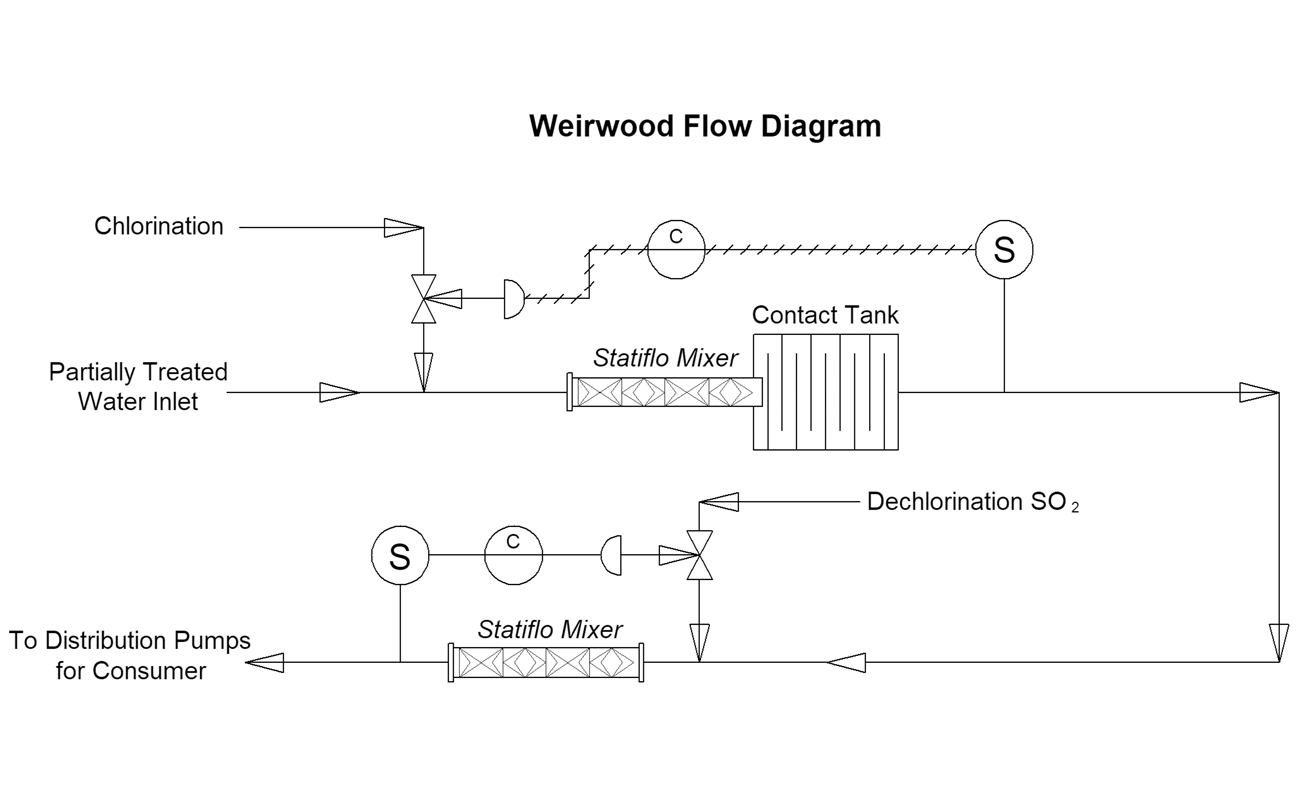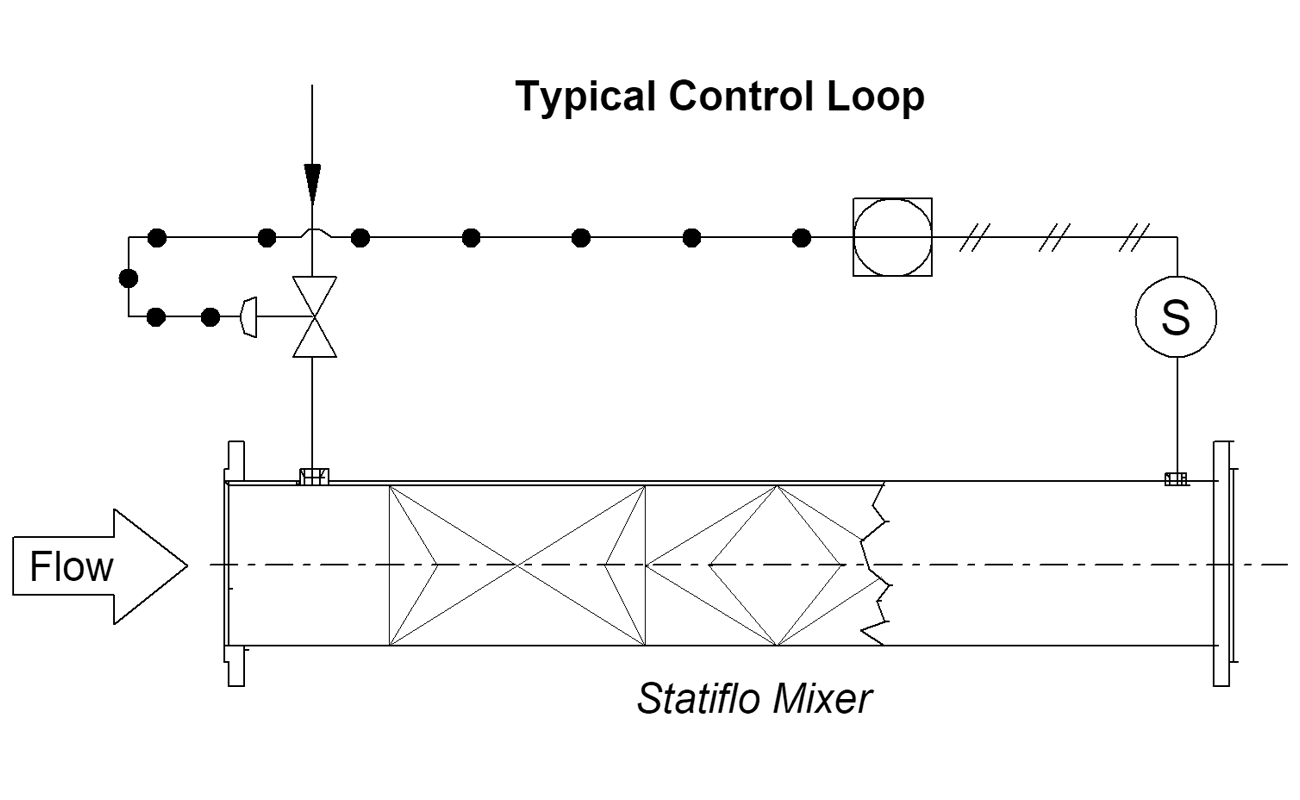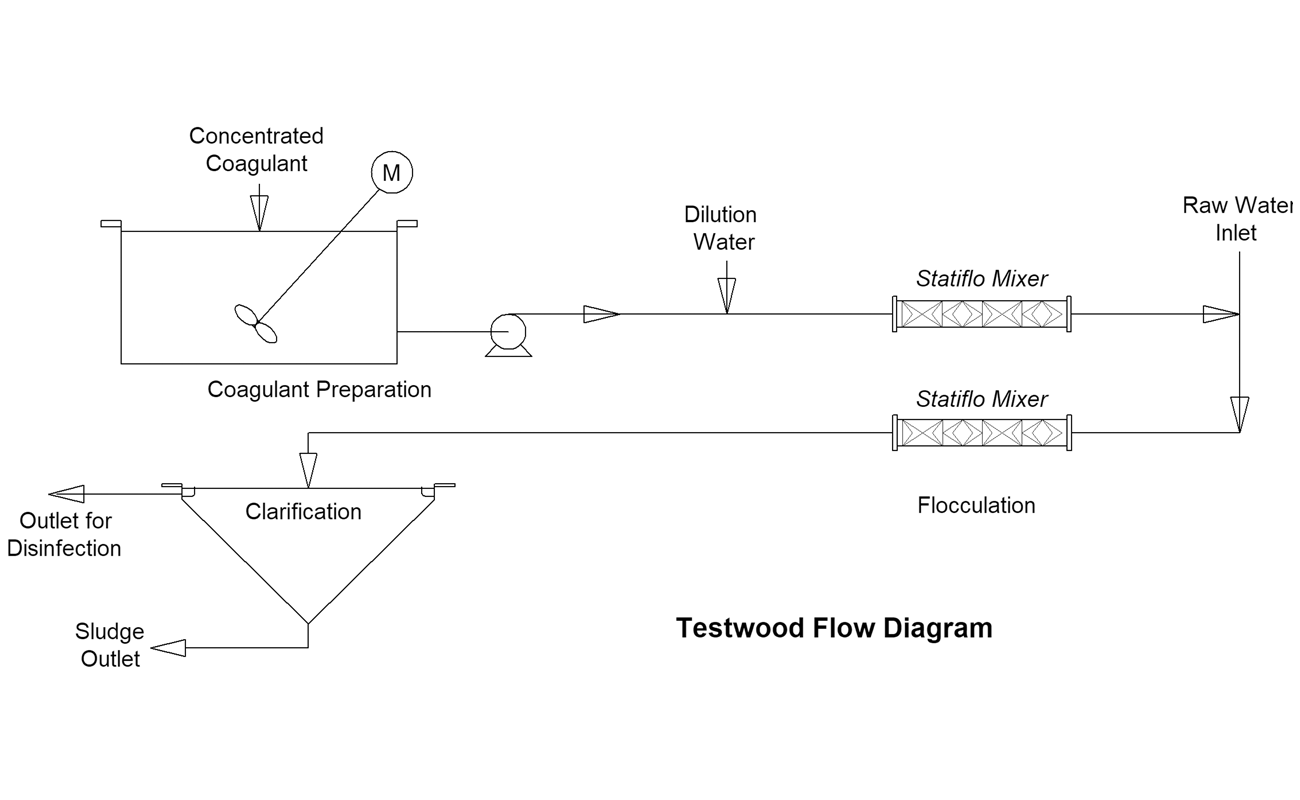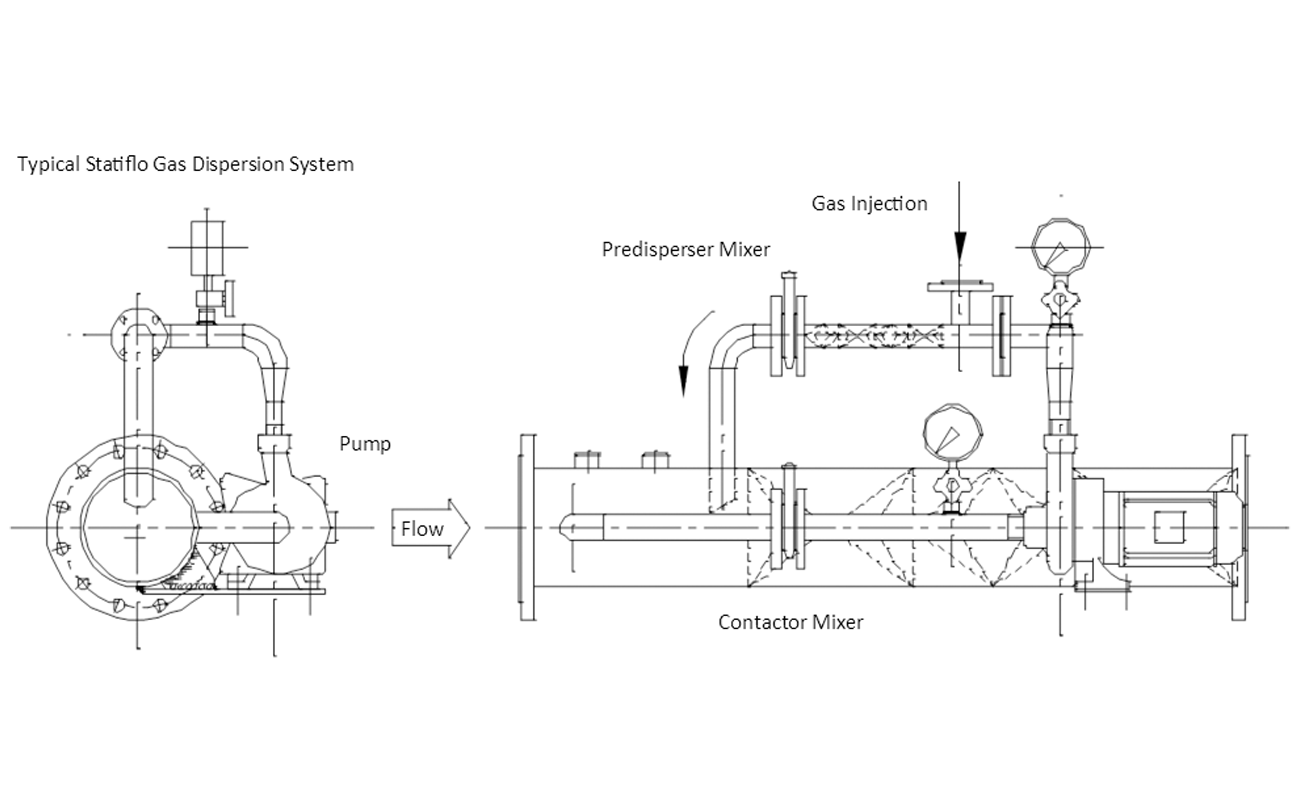Gas Dispersion System: The inline dispersion of a gas in a large volume of liquid very often requires relatively expensive equipment. A classic example is the ozonation of drinking water.
The production of ozone is complex and expensive, so the entry system should be special to work efficiently. For this purpose, Statiflo has a gas inlet system consisting of a combination of static mixers.
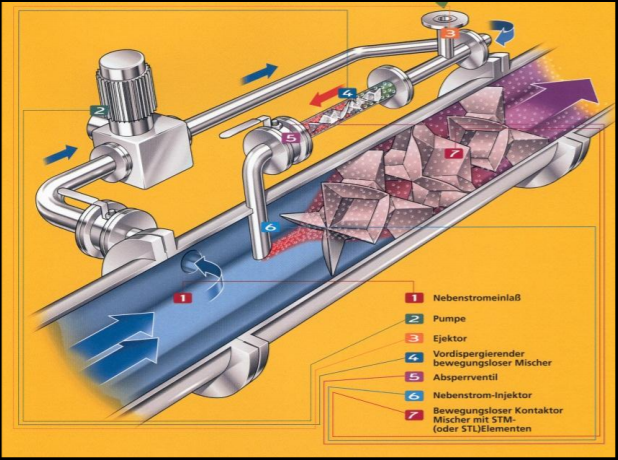
The pump (2) conveys part of the untreated water via the small gas dispersion mixer (4), in which, under optimal pressure and flow conditions, a Gas dispersion arises. This gas dispersion, with very fine bubbles (between 500 and 1000 µm), is then injected into the contact mixer (7). The two-phase current is uniform in the Distributed mixer, thus optimizing the gas / liquid contact. An effective mass transfer can occur.
The contact mixer can be integrated into the pipeline as well as into existing ones. Ozonation basins, so-called channel mixing elements.
A continuous optimal mass exchange was achieved with low acquisition and operating costs and with minimal maintenance.
Since the bubble size depends on the speed in the pre-disperser, the system of Flow fluctuations of the main stream is largely independent (see graphic).
Whether dissolved iron is oxidized with air, or drinking water with oxygen, or ozone is fumigated, the STATIFLO gas dispersion system provides the ideal combination of costs and efficiency.
We know from reference systems that gas consumption could be reduced by up to 75% and that entry efficiencies of over 95% (guaranteed value) can be achieved.
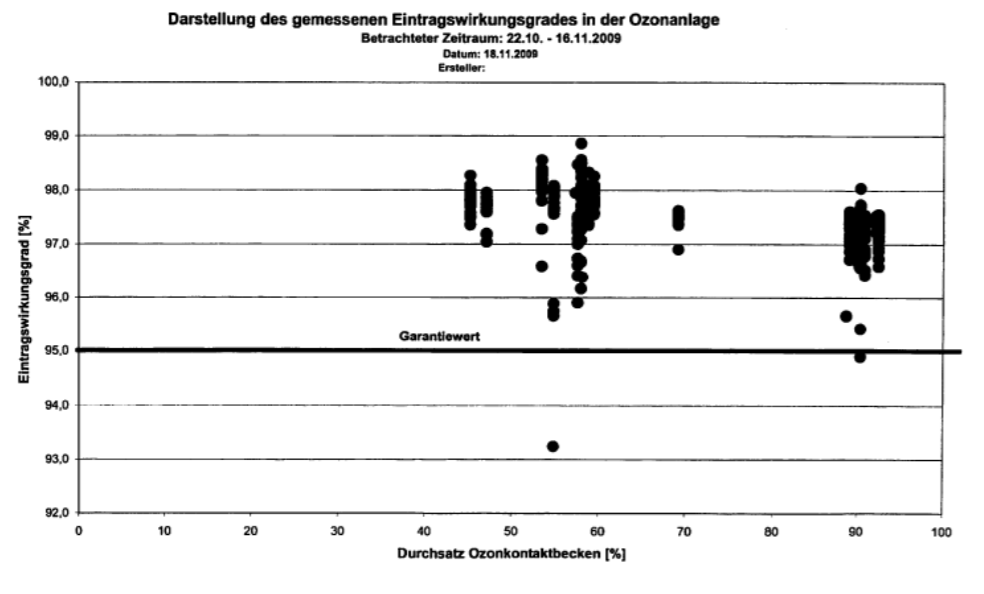
ADVANTAGES OF GAS DISPERSIONS SYSTEMS
- comparatively low acquisition costs
- very easy installation
- low space and energy requirements, thus low operating costs

